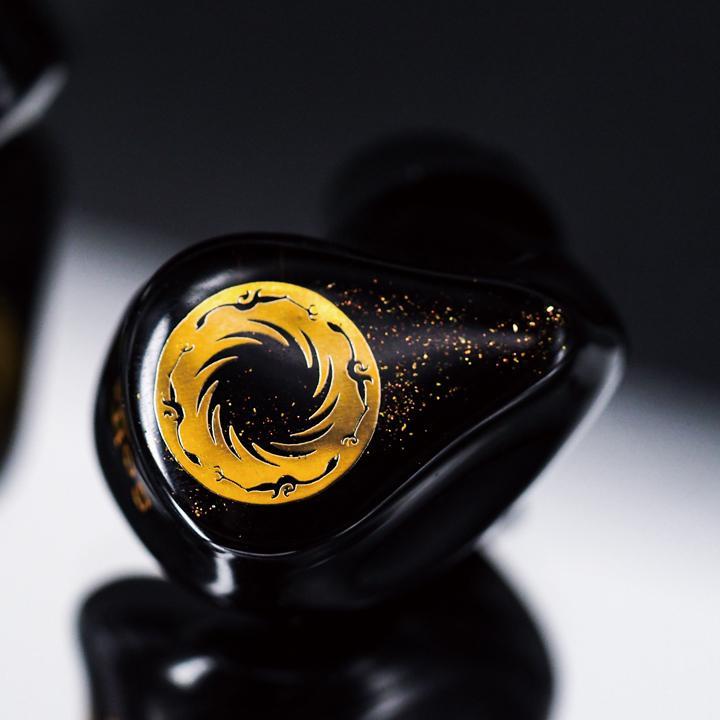
Moondrop Unveils Solis and Starfield IEMs
A little while ago Moondrop announced their newest flagship IEM – the S8 – which features a total of no less than 8 balanced armature drivers per earpiece. However, balanced armature drivers are certainly not the be all and end all of driver technology that can be used in IEMs, and that’s because hybrid driver configurations are also exceptionally popular and can offer equally good sound quality. As such, Moondrop have now also developed a new flagship hybrid IEM, which is called the Solis .
Accompanying the Solis is also a far more affordable IEM which they have named the Starfield.
Meet The Solis
First up we’ve got the Solis. What’s really interesting here is that Moondrop have designed the Solis with a very unconventional type of hybrid driver setup. In most cases, a hybrid driver configuration would consist of one or more balanced armatures to handle the mid and high frequency ranges, whereas a dynamic driver would be used to handle the lower frequencies. Over the last year or so we’ve seen a lot more emphasis being put on the implementation of planar magnetic drivers into IEMs as well as utilising them within hybrid driver configurations. However, the Solis goes one step further into the realm of the unconventional by opting to use a low voltage electrostatic driver. Even more unusual still is the fact that the electrostatic is used for the higher frequencies, whereas the balanced armatures are reserved for the lower and mid frequencies.
In total, the Solis features a 6-driver hybrid setup per ear piece, which consists of 2 electrostatic drivers alongside 4 balanced armature drivers, 2 of which are made by Softears, whereas both the remaining 2 balanced armatures and the 2 electrostatic drivers are made by Sonion.
The frequency response range is rated to be 20-45kHz, and will require very little driving power considering that it has an impedance of just 7.5-ohms and a sensitivity of 120dB/Vrms.
According to Moondrop, the sound signature of the Solis is described in this manner:
“The tuning is for paying tribute to the sound style of traditional electrostatic earphones
The goal for the Solis’ tuning is to reproduce the gorgeous and smooth sound style of traditional electrostatic earphones with a miniature electrostatic and BA driver. This unique design idea, which is completely different from other similar products on the market, makes Solis featured with unique sound performance, showing the sound of tribute to traditional electrostatic earphones.”
Seeing as the Solis is one of Moondrop’s flagship products, don’t make the mistake of thinking that it’s only considered a flagship because of the more intricate driver configuration. Instead, the shell itself has also been given the flagship-treatment seeing as each earpiece is individually created entirely by hand.
The other aspect which is unmistakably “flagship” is the price, which has been said to be $1099.99.
Check Out The Starfield
The next new addition for Moondrop is the Starfield. Unlike the Solis, the Starfield features a far simpler driver layout. In fact, it sports just a single 10mm dynamic driver. However, Moondrop have put a particular emphasis on the design of the driver as to make you aware of the fact that this is no regular ol’ driver. What we’re talking about here is the diaphragm of the driver, which is said to be named a Super-sequential Carbon nanotube diaphragm.
Apparently, for Moondrop this is a big deal seeing as they’ve described this technology as follows:
“Super-sequential carbon nanotube array is a proud application technology in China, which allowing nanotubes as a micro material to be applied in macroscopic reality. The Starfield’s diaphragm is a composite of carbon nanotube array warp and weft knitted in a polymer film. 6 microns (0.006 mm) thick diaphragm deliver us a combination of high rigidity, high toughness and lightness, and provide clear, detailed and smooth treble.”
As for the sound signature, Moondrop have stated, “Owing to the rich dynamic design experience and mature platform, Starfield is able to show the outstanding acoustic index: excellent bandwidth and ultra-low full-frequency distortion. What’s more, Starfield inherits the balanced three-frequency distribution of KXXS, and relies on different materials to perform softer and warmer sound. Different from KXXS’s sharp, wide, accurate sound field and super clear analysis, Starfield focus on delicate, soft, stretched sound and excellent quality bringing a delicate balance between balance and musicality.”
The specifications for the Starfield include a frequency response range of 10-36kHz, an impedance of 35-ohm, and a sensitivity 122dB/Vrms.
Thankfully, the Starfield’s more simplistic design also resulted in a considerably more affordable price-tag. Coming in at just $109.99, the Starfield is certainly a far more attainable product for most people.
